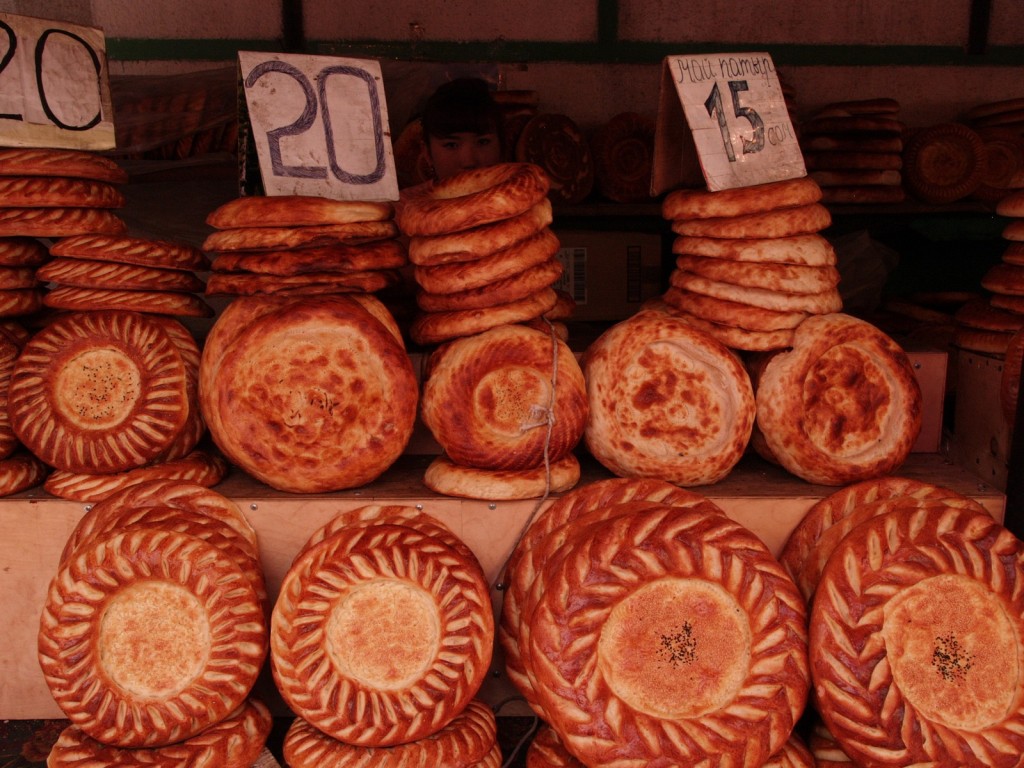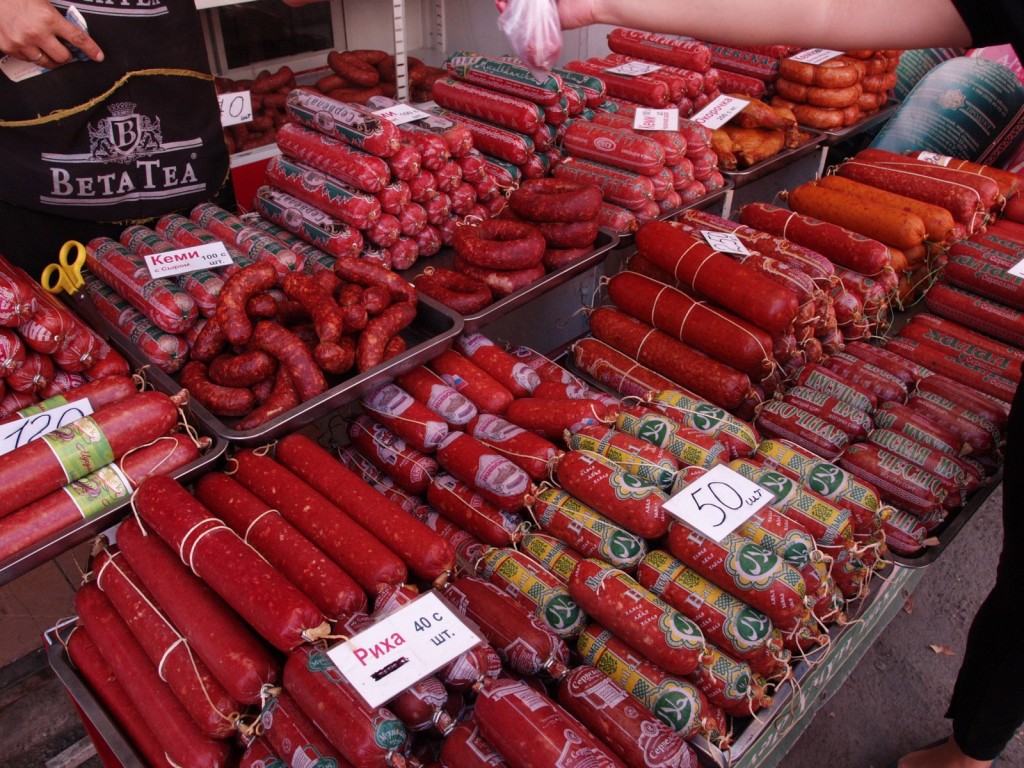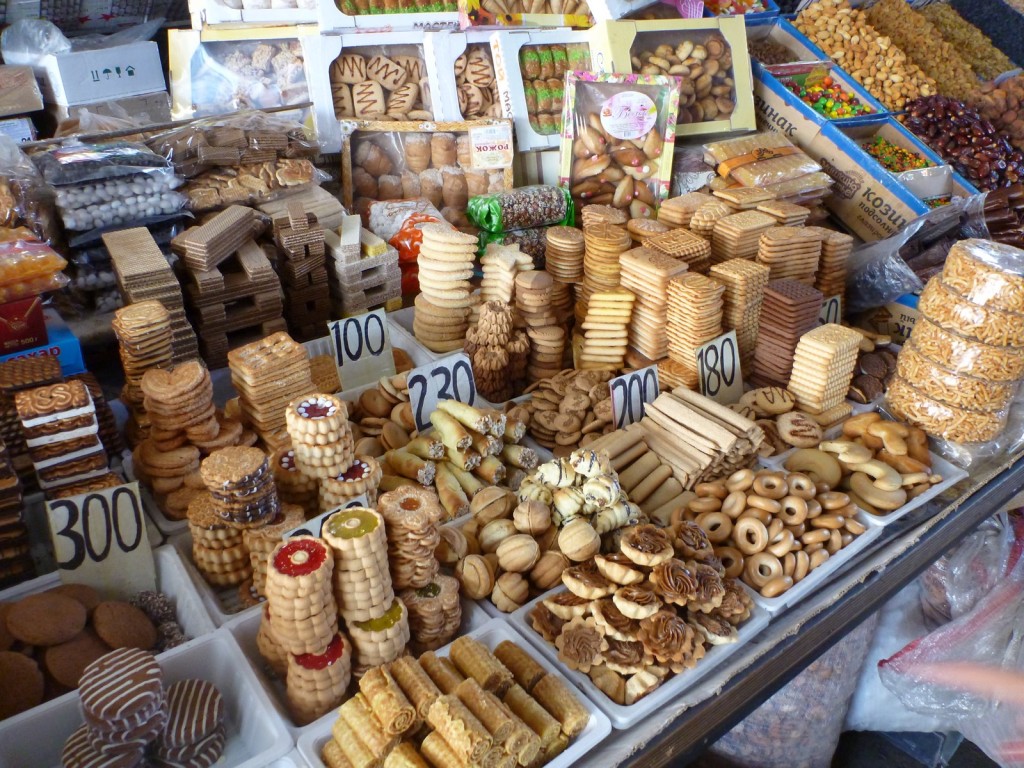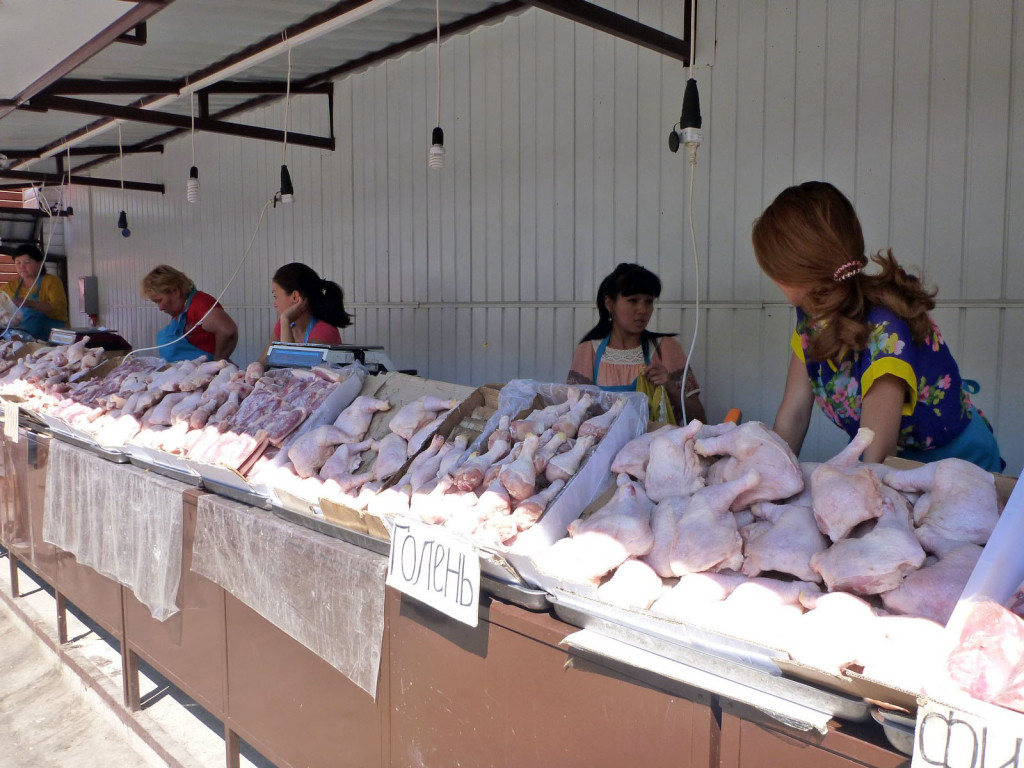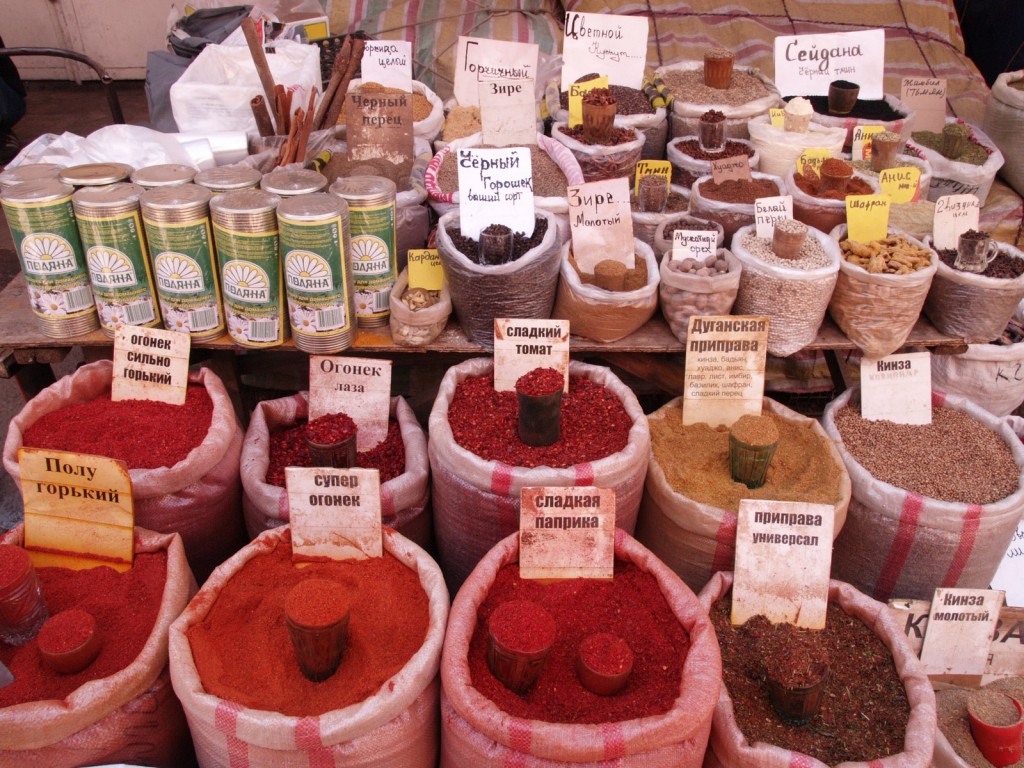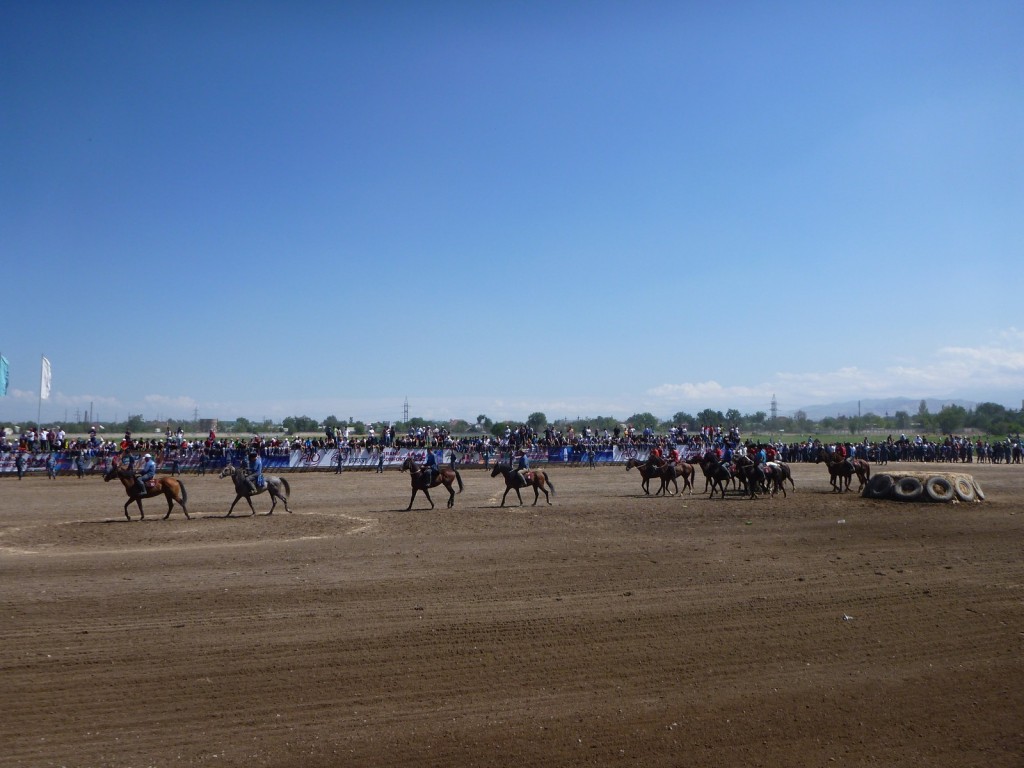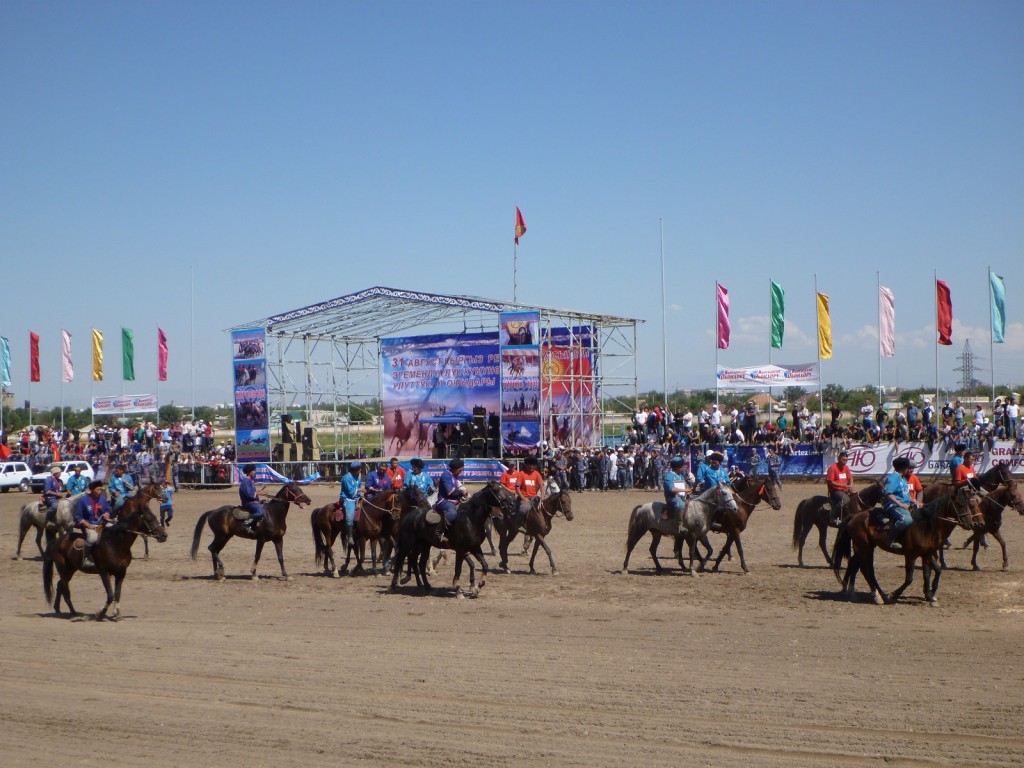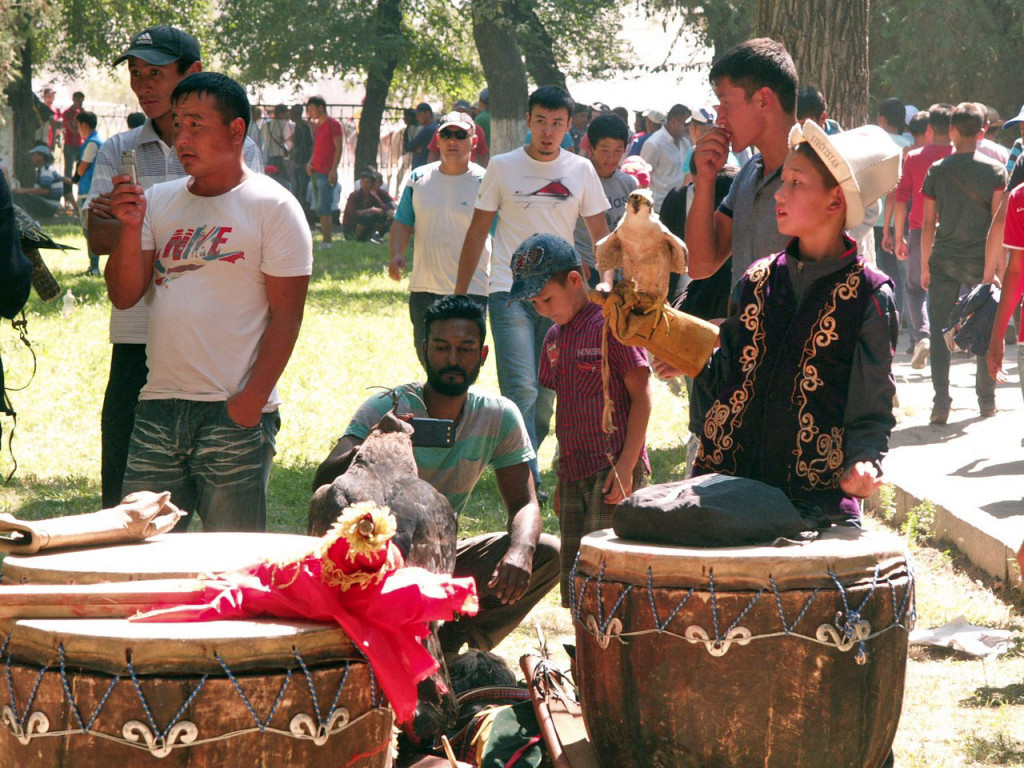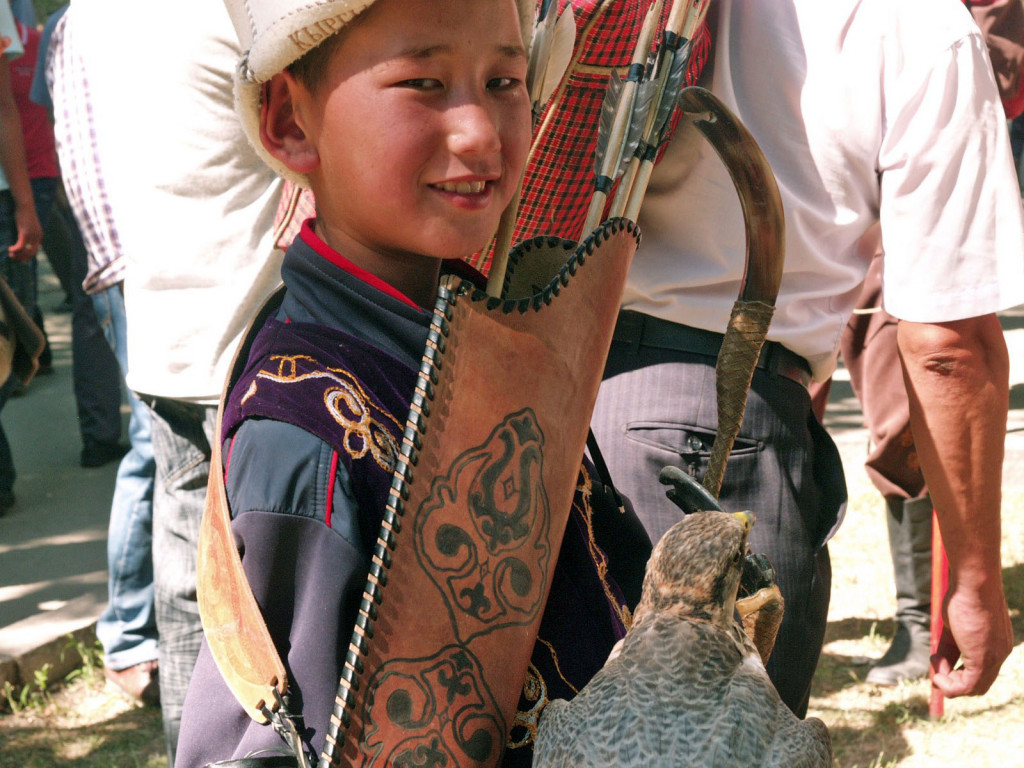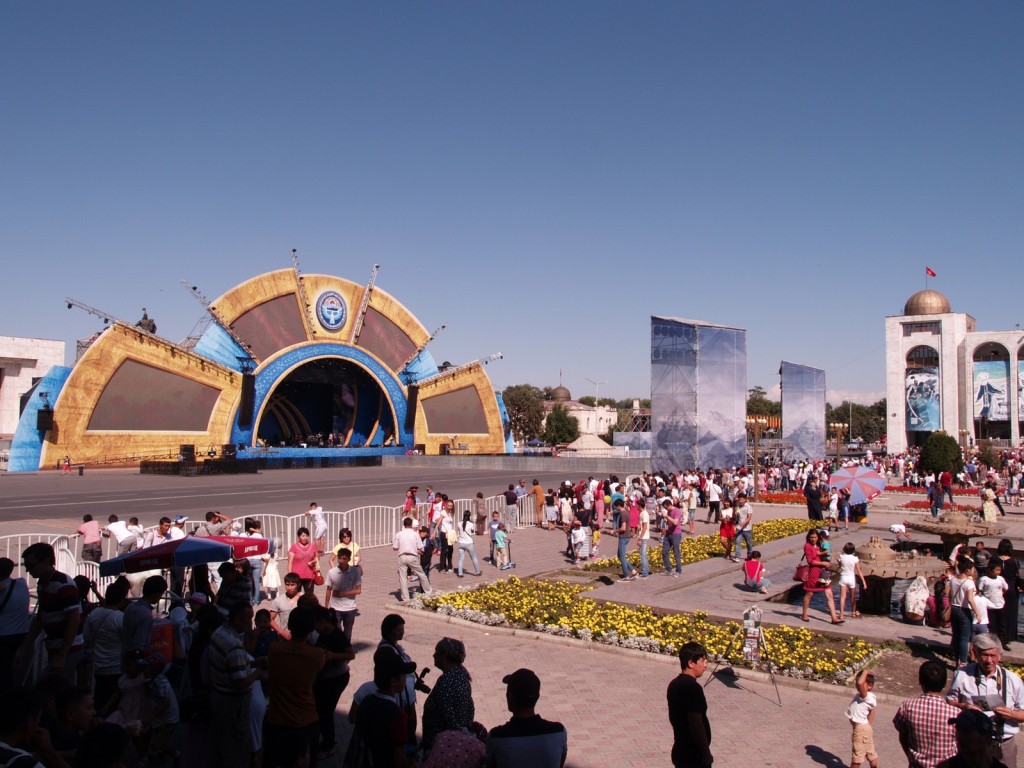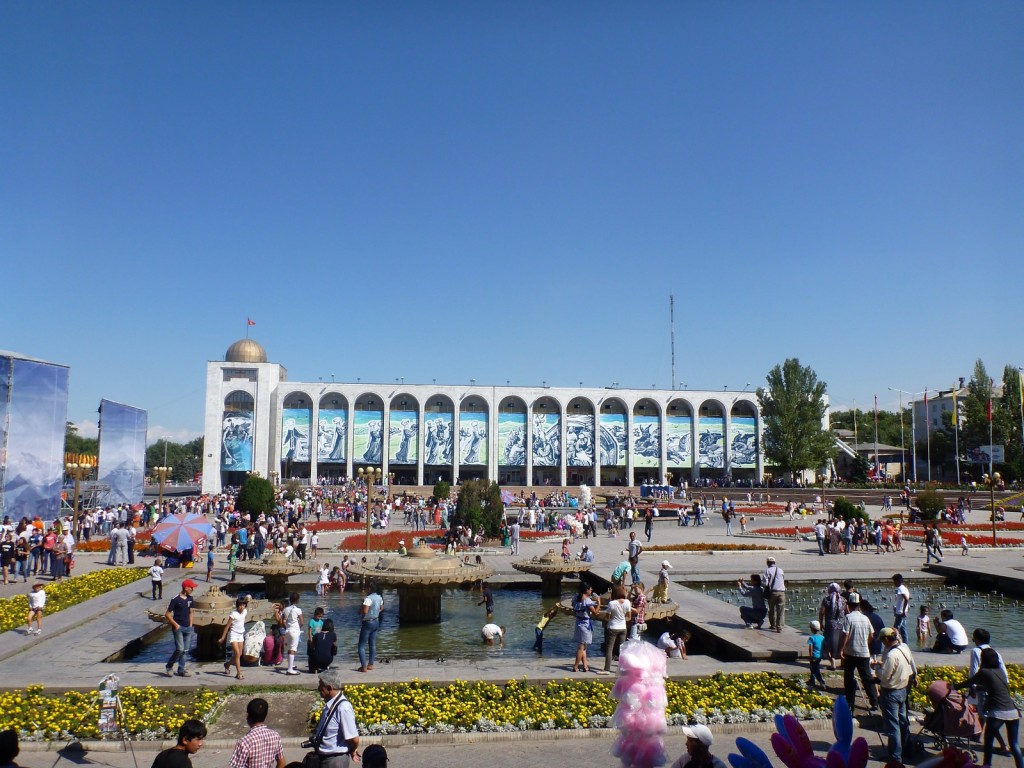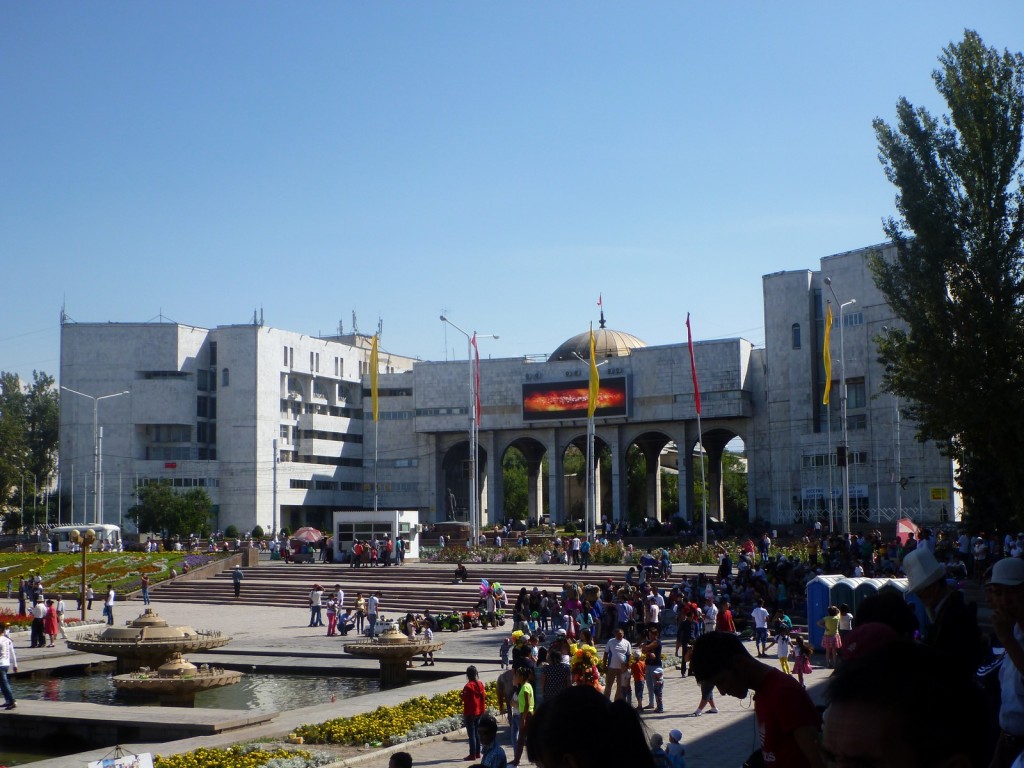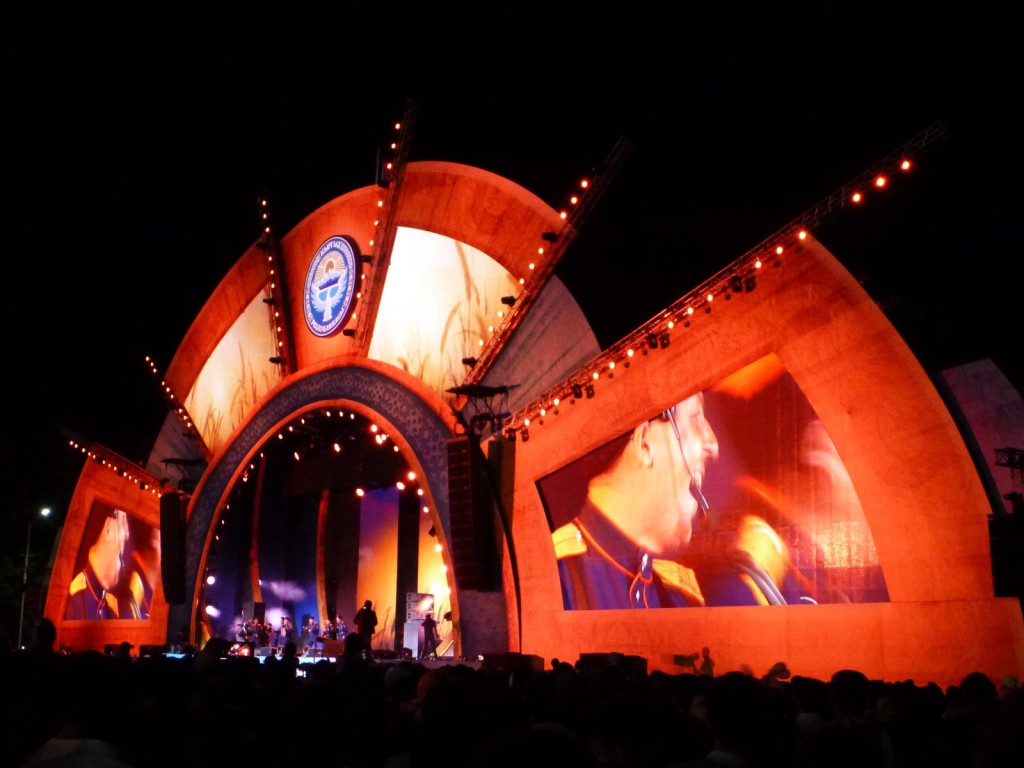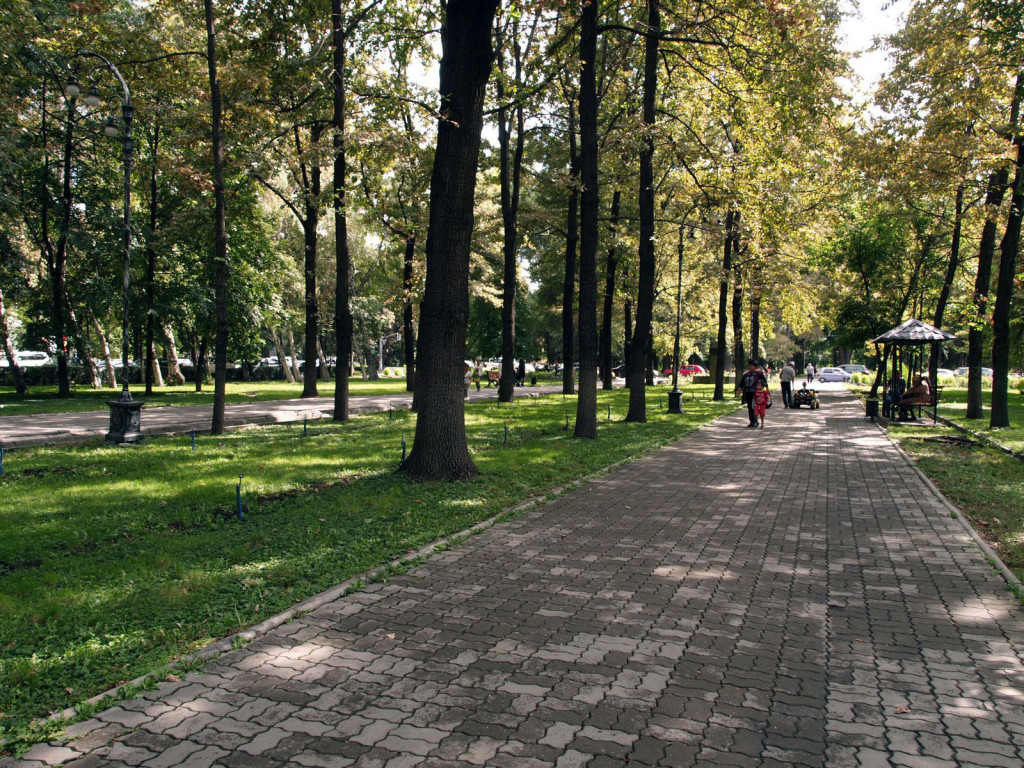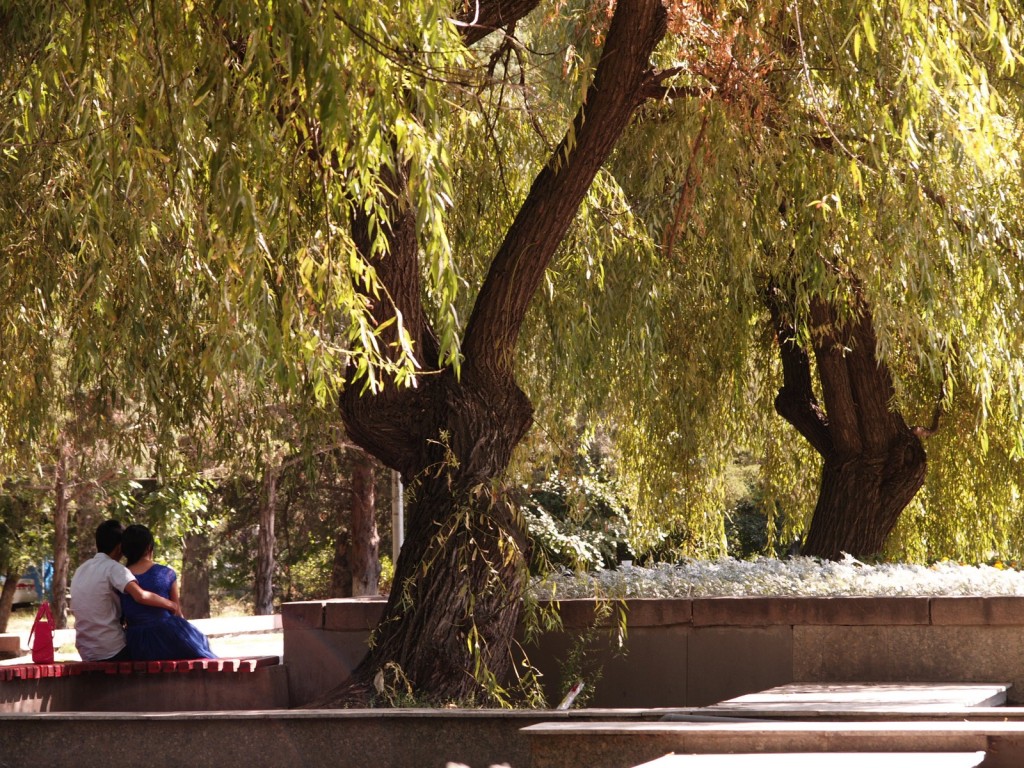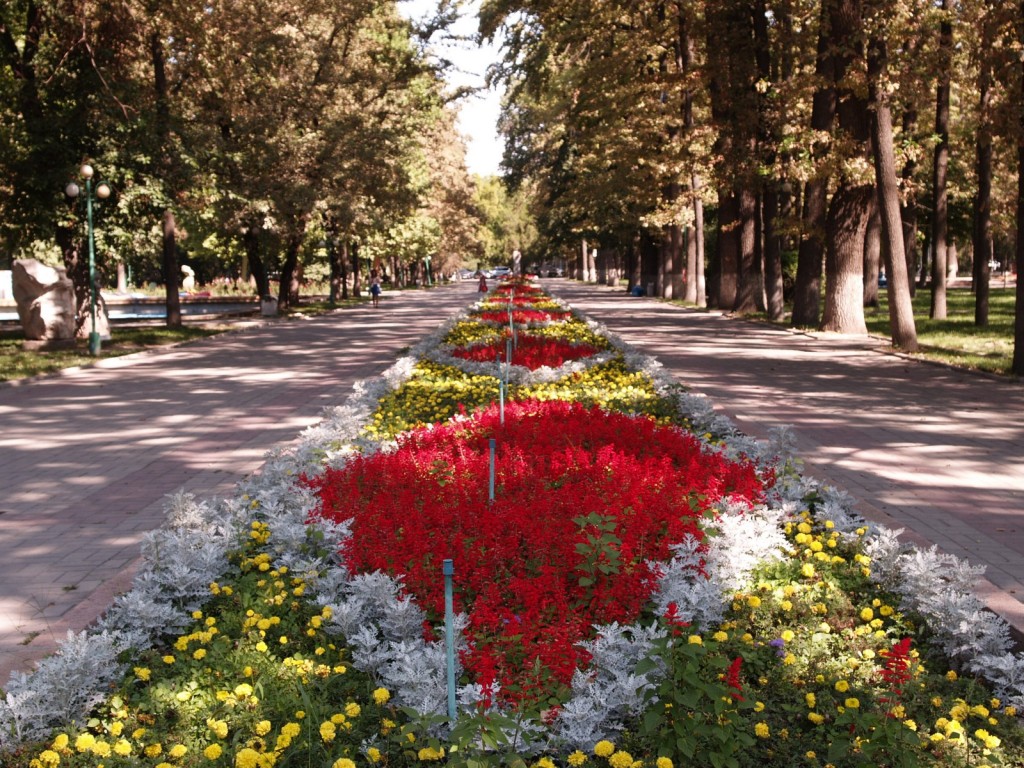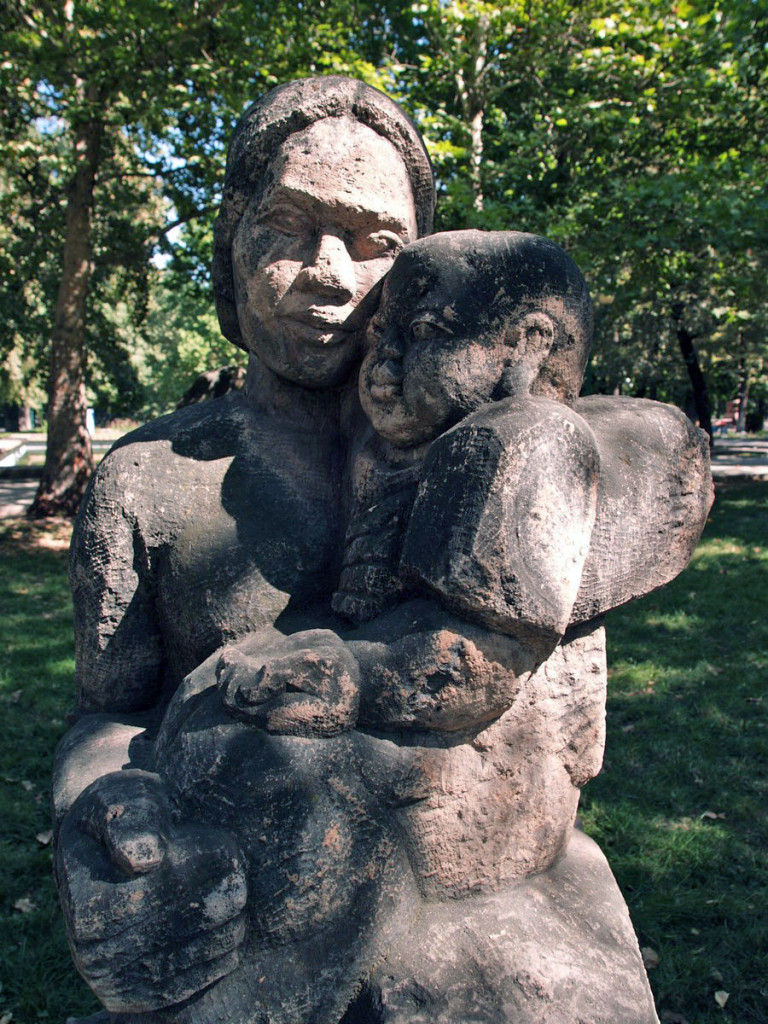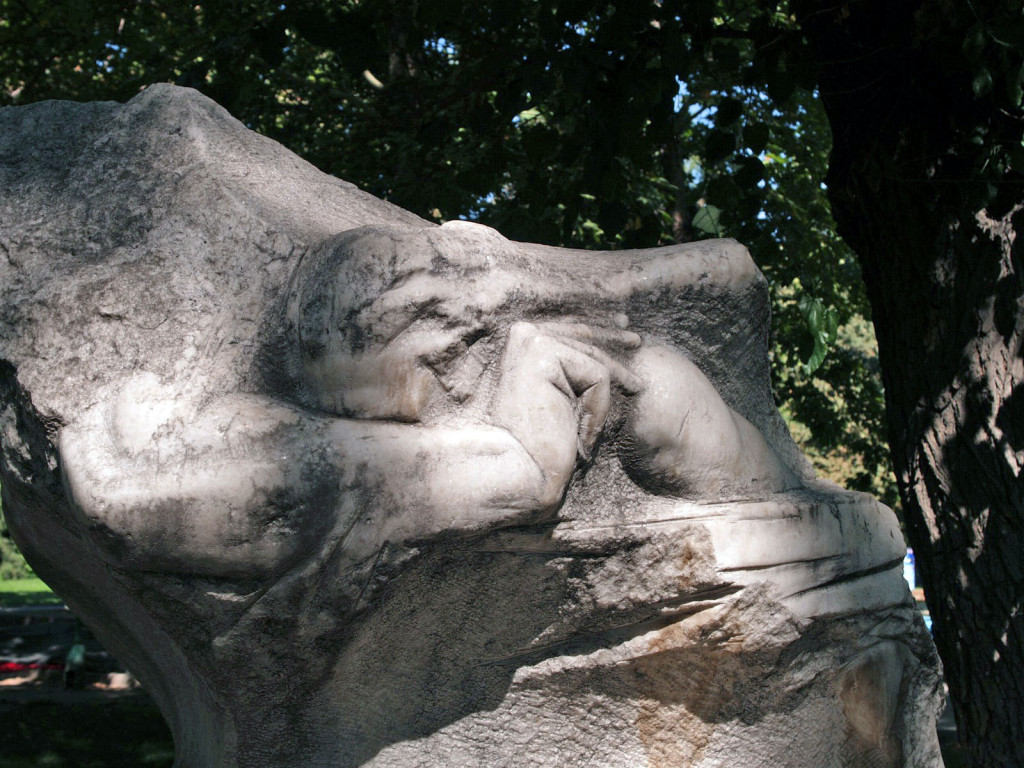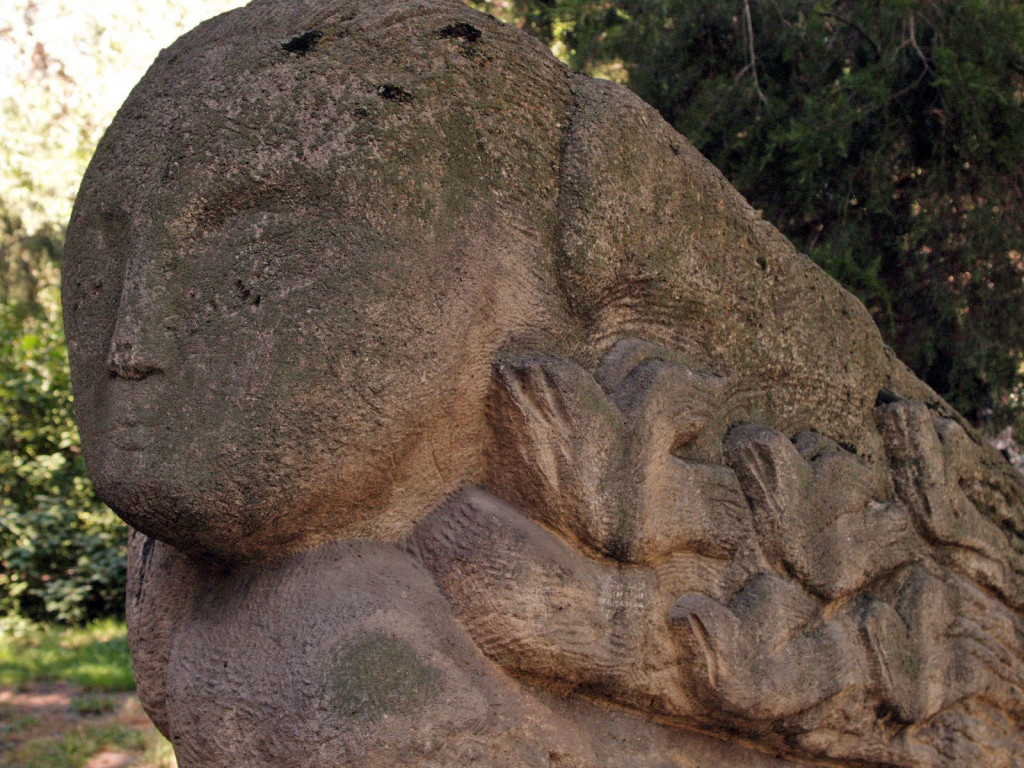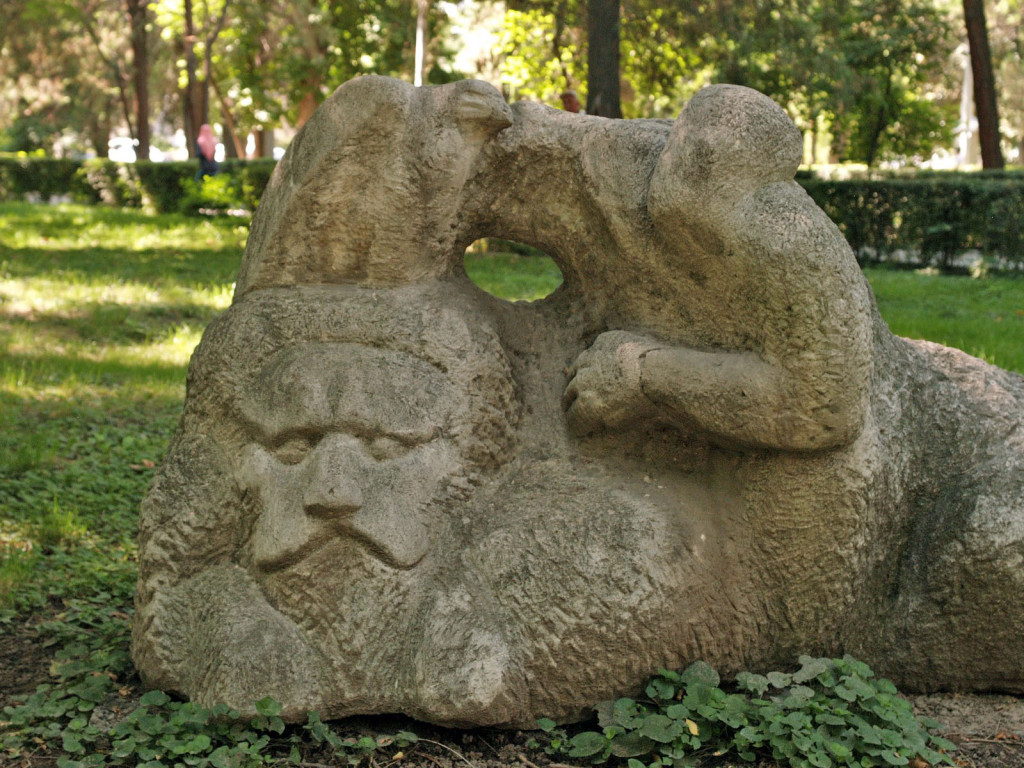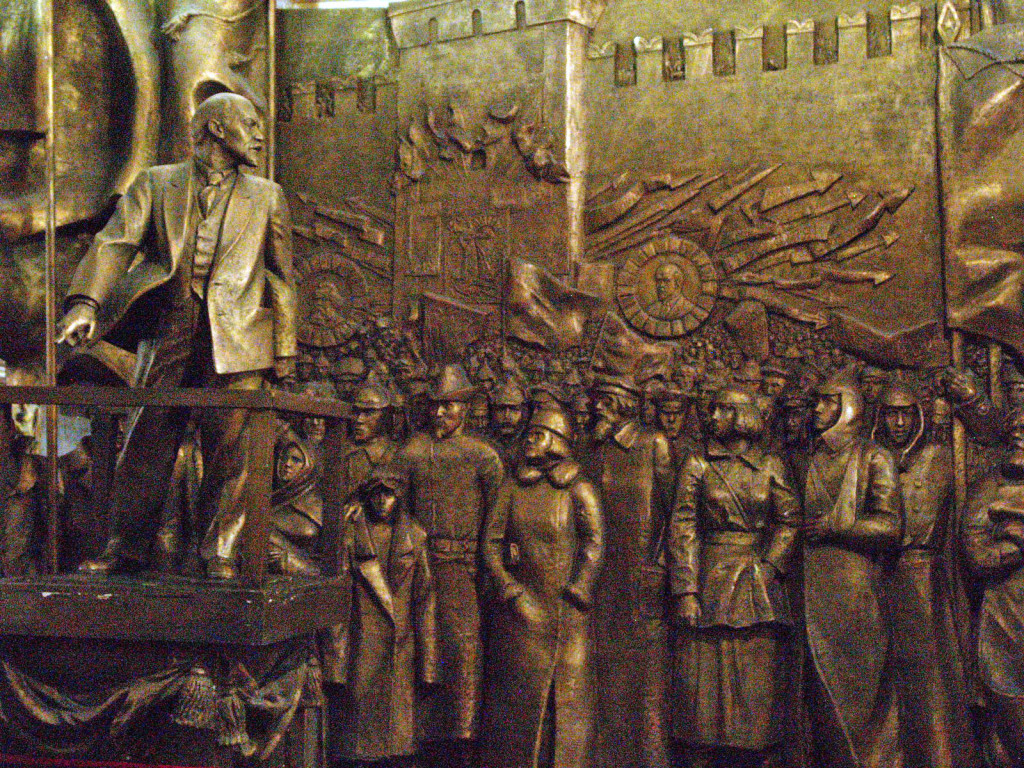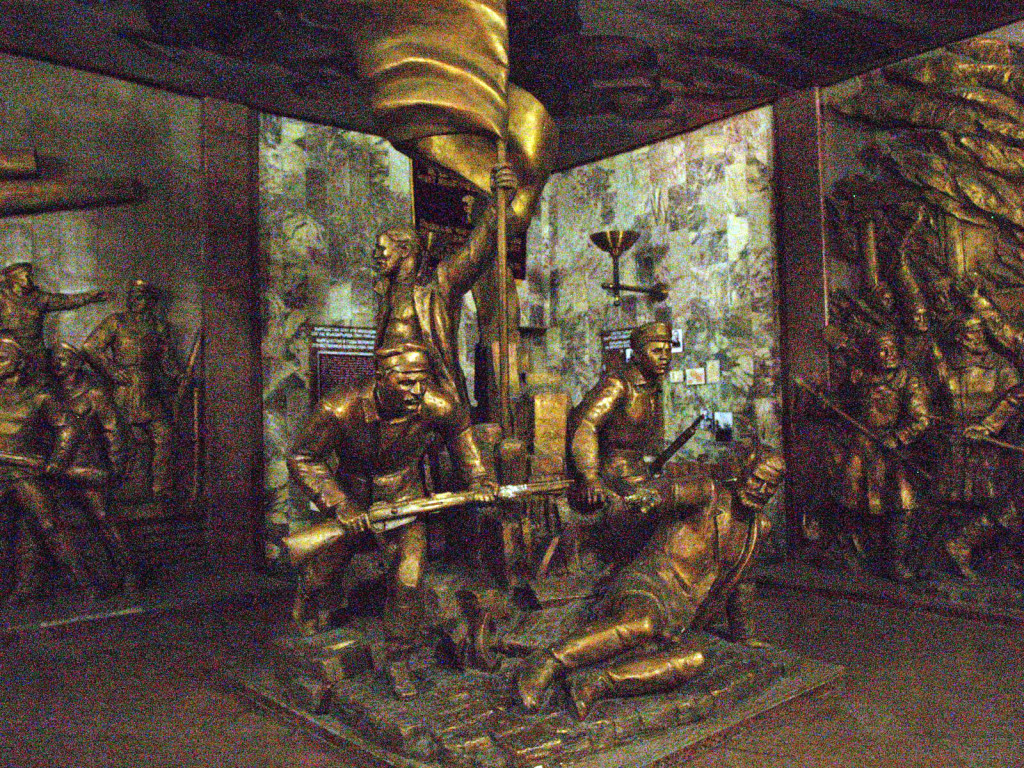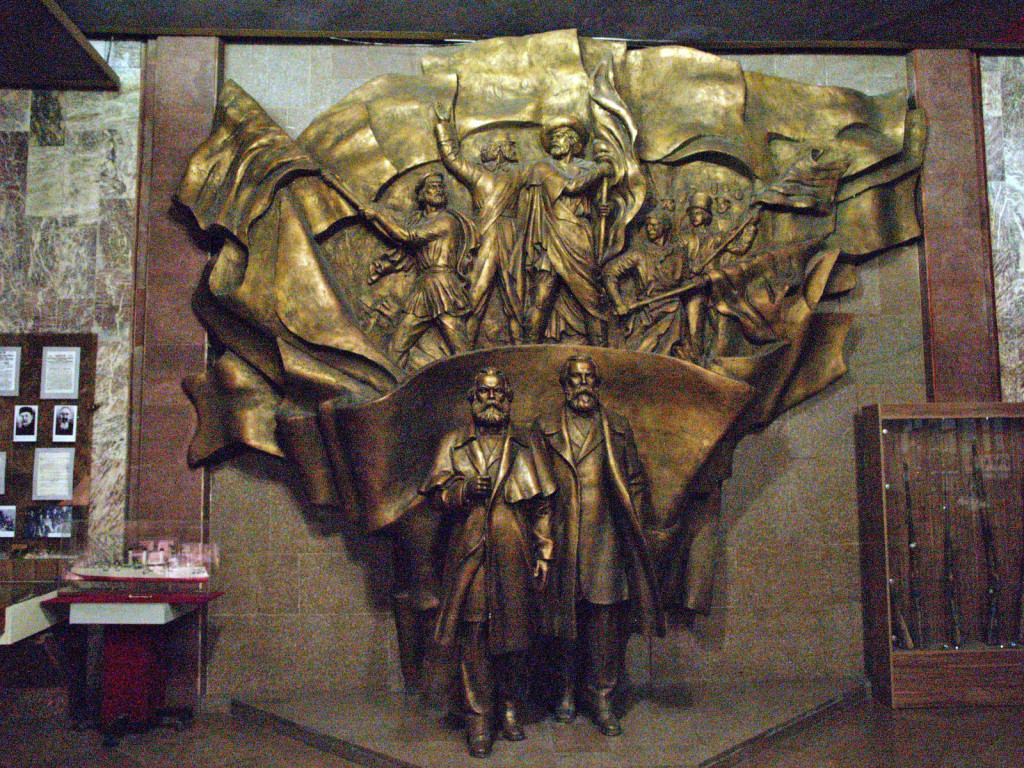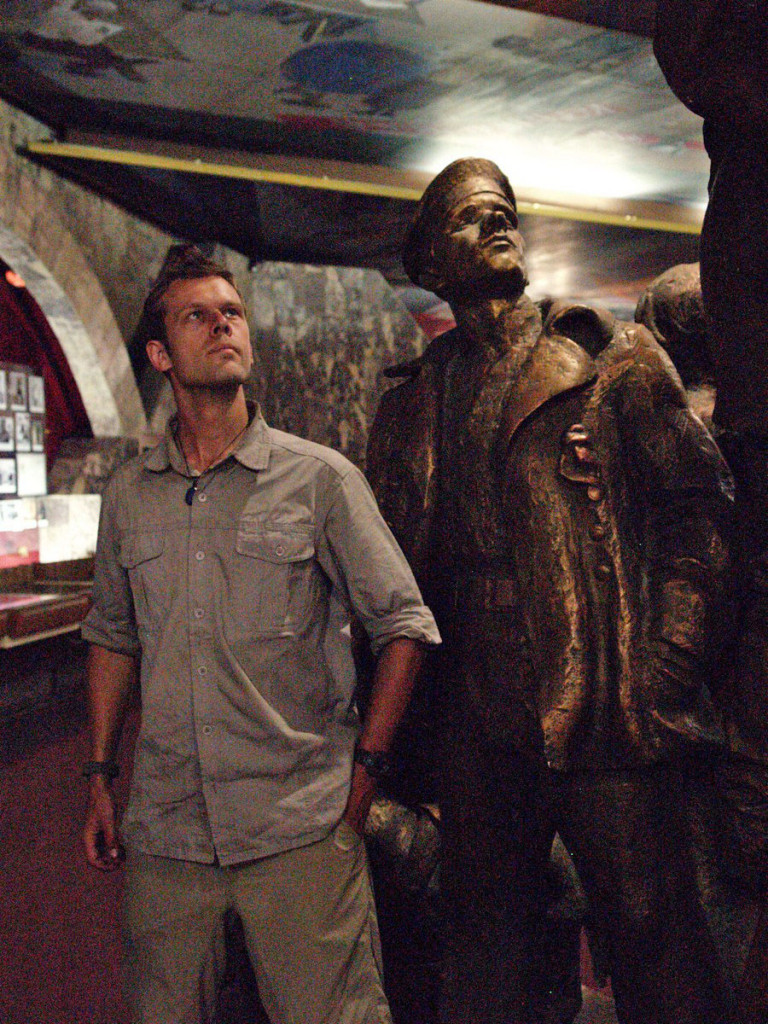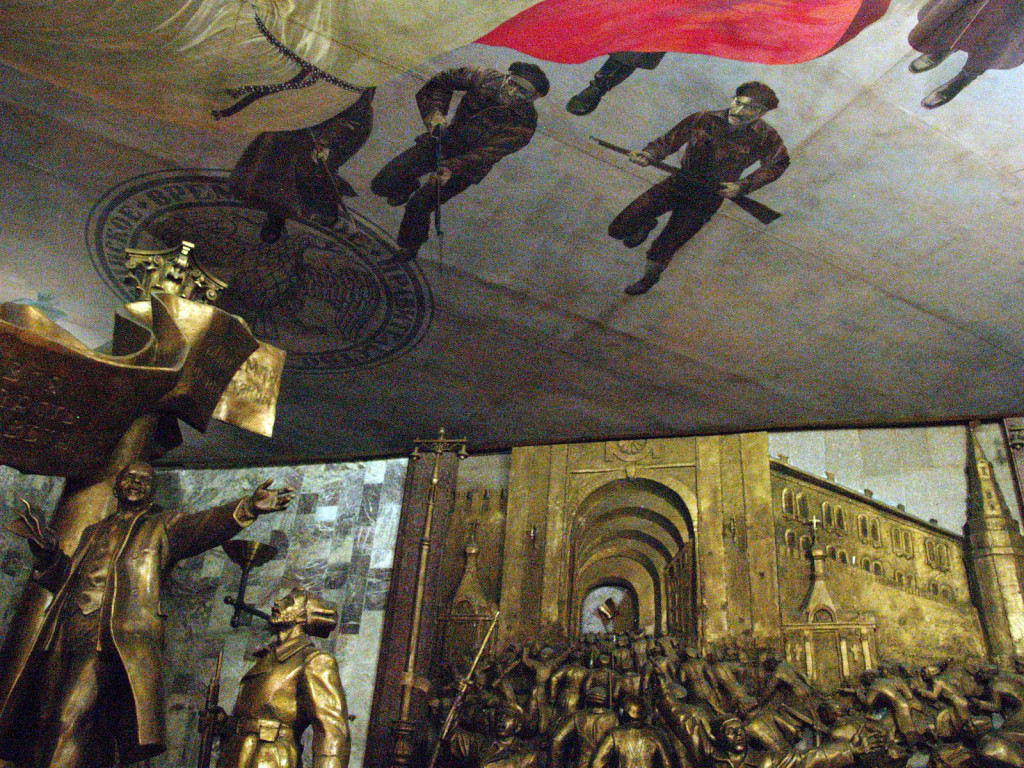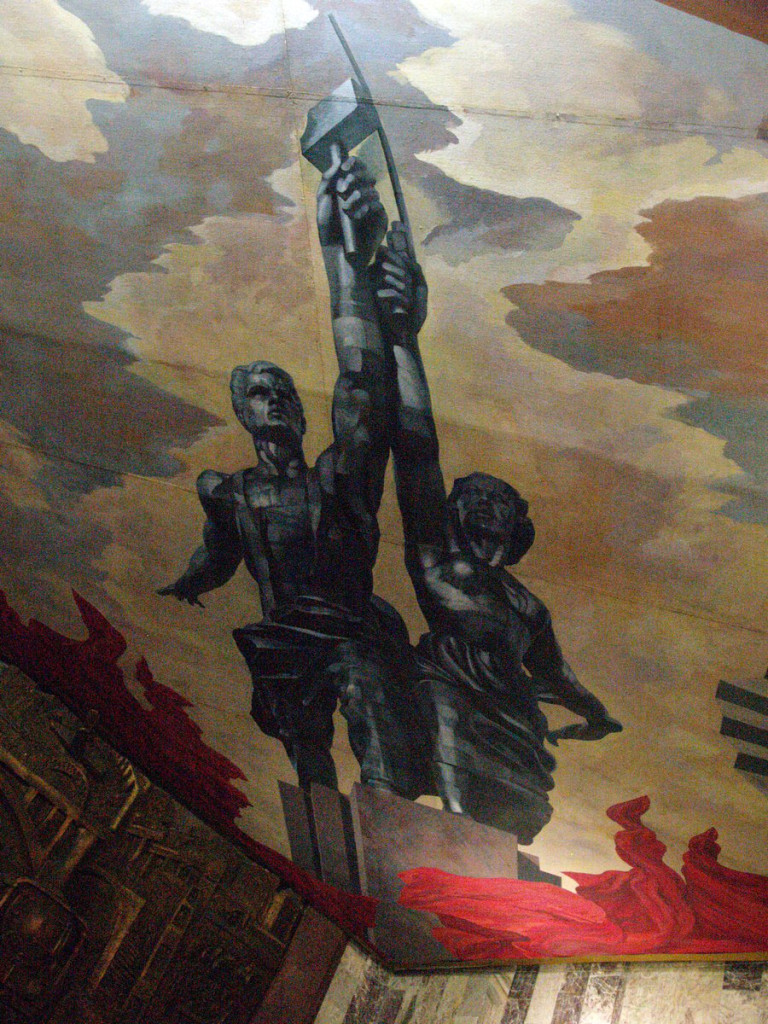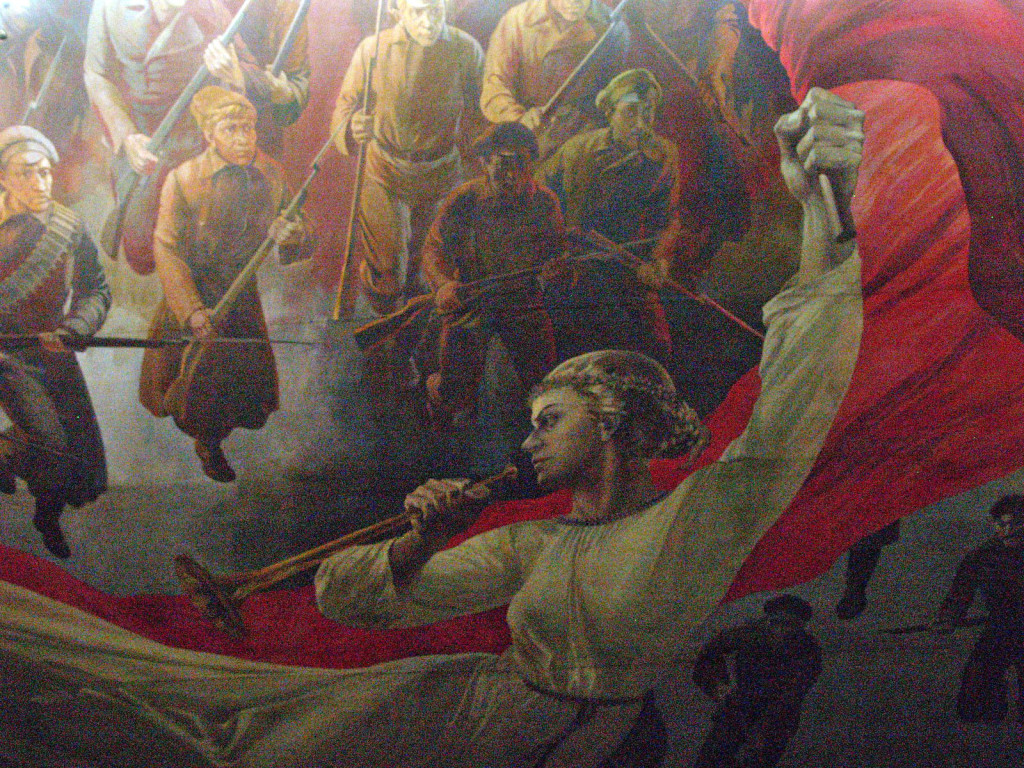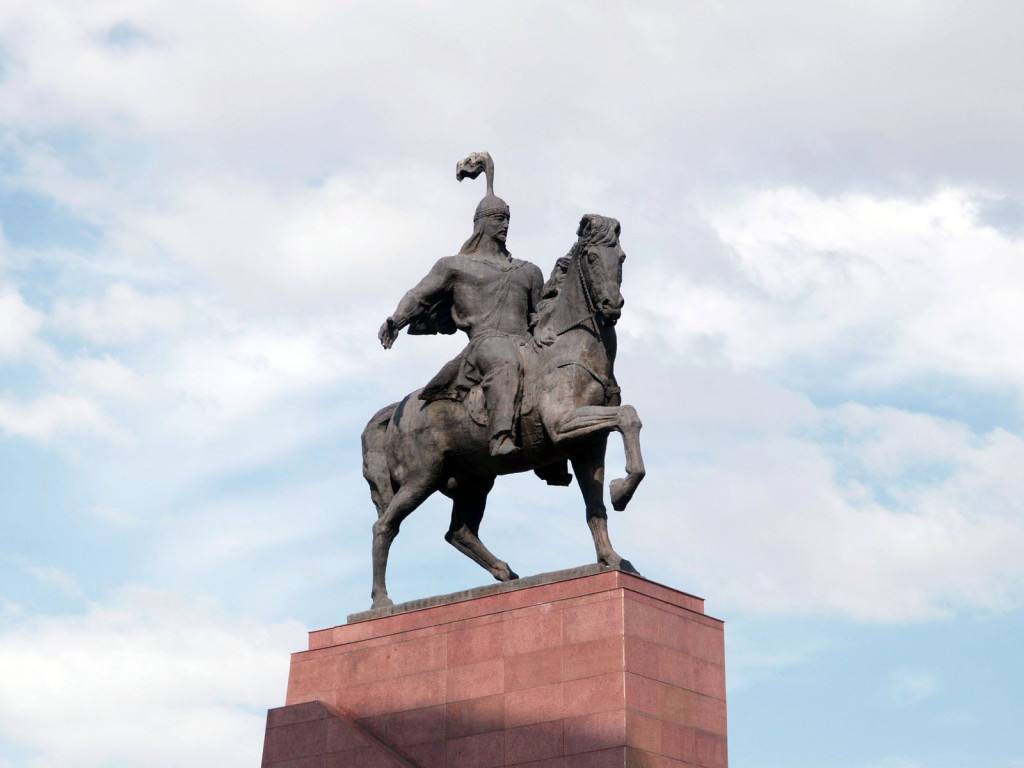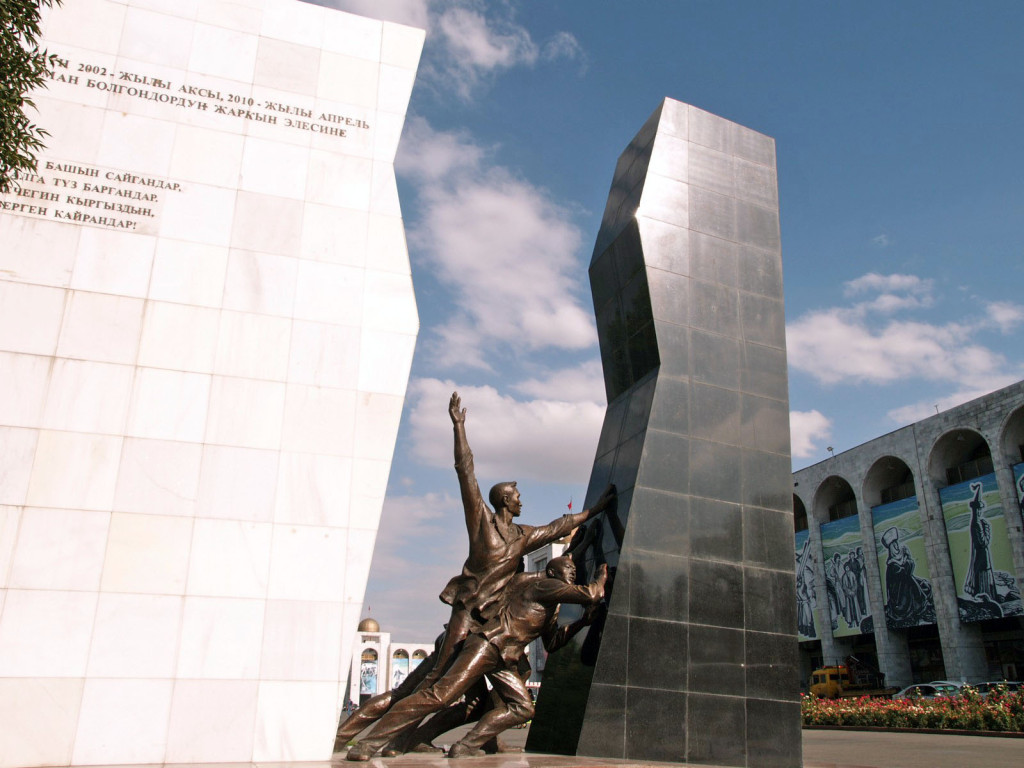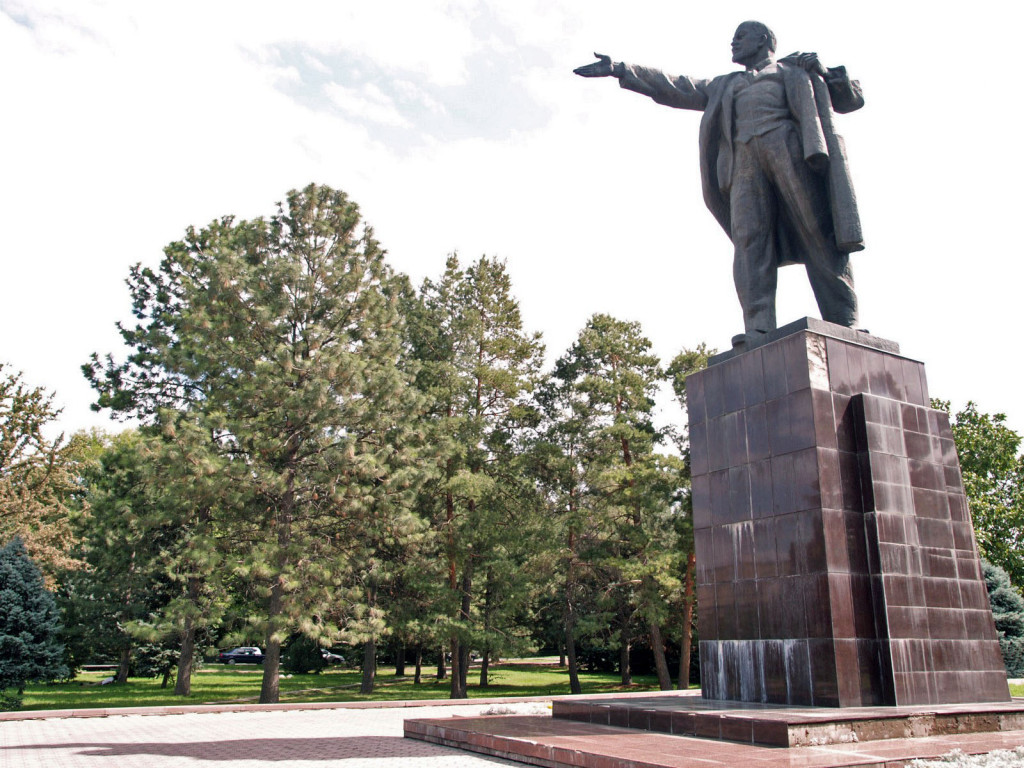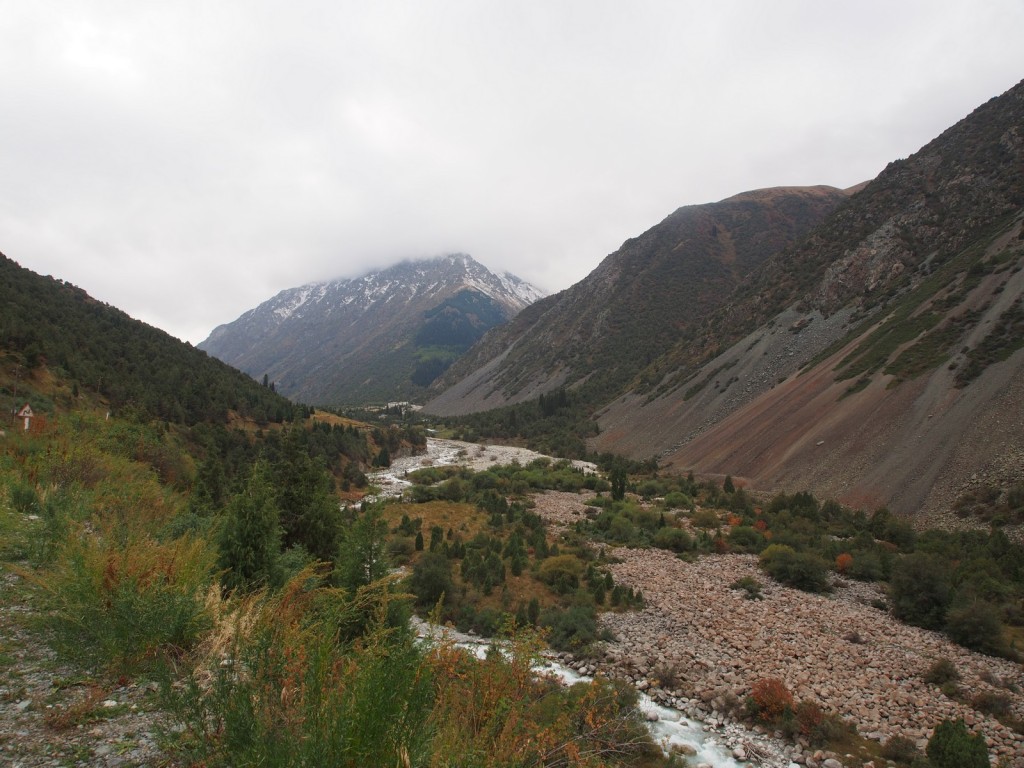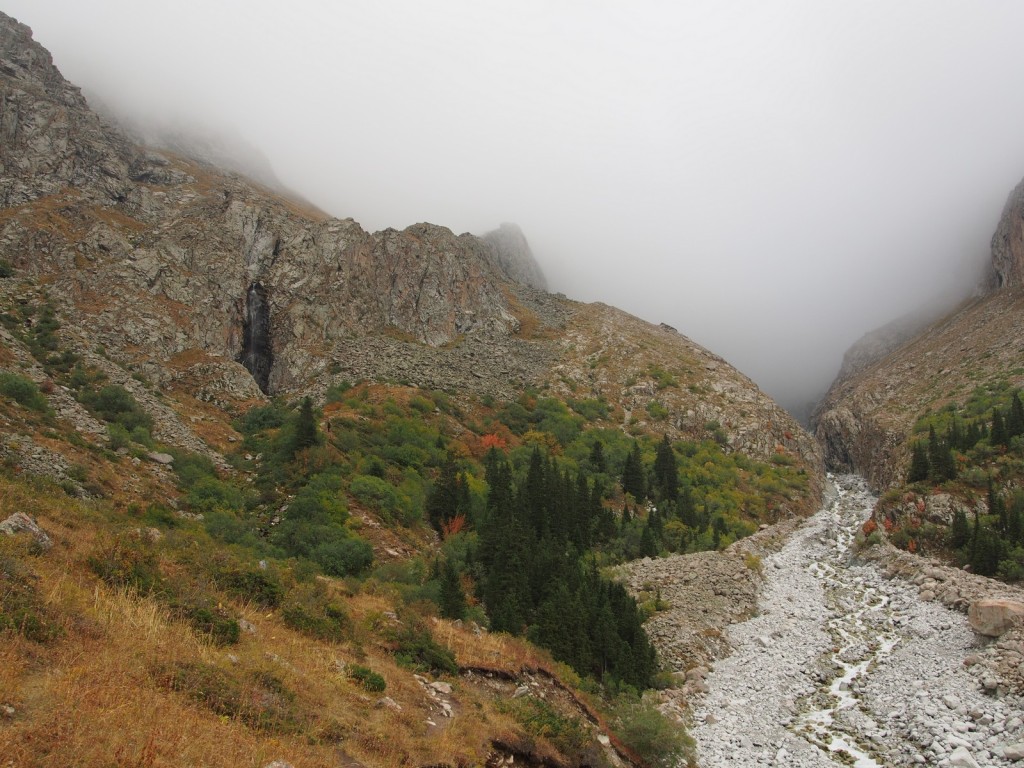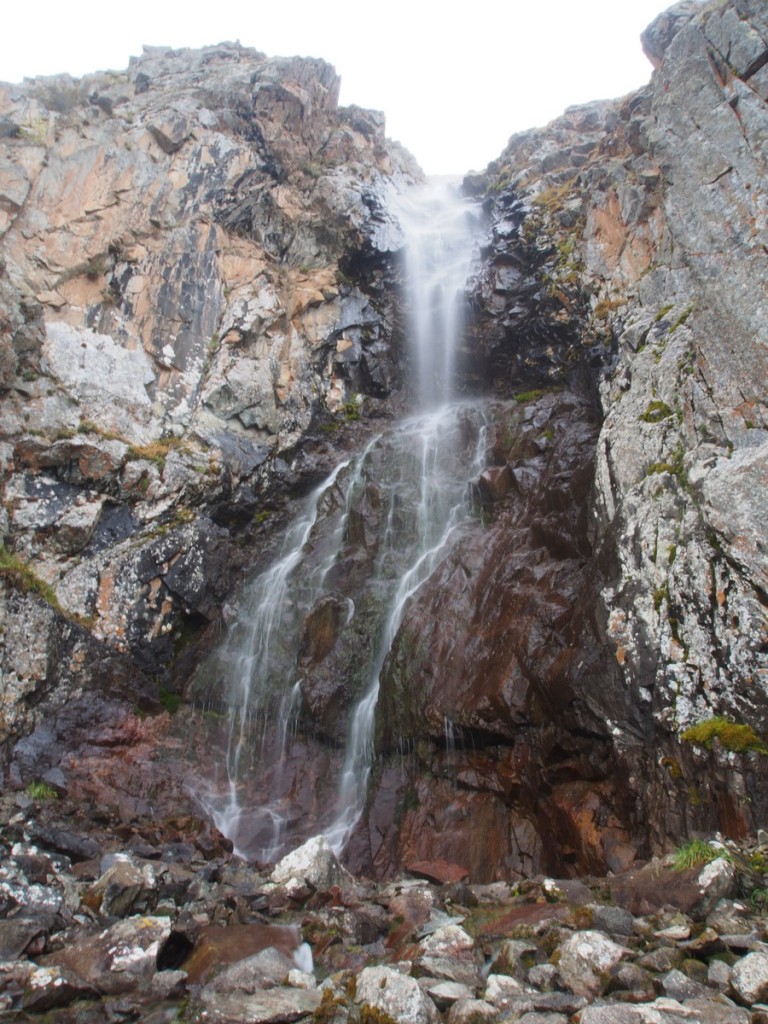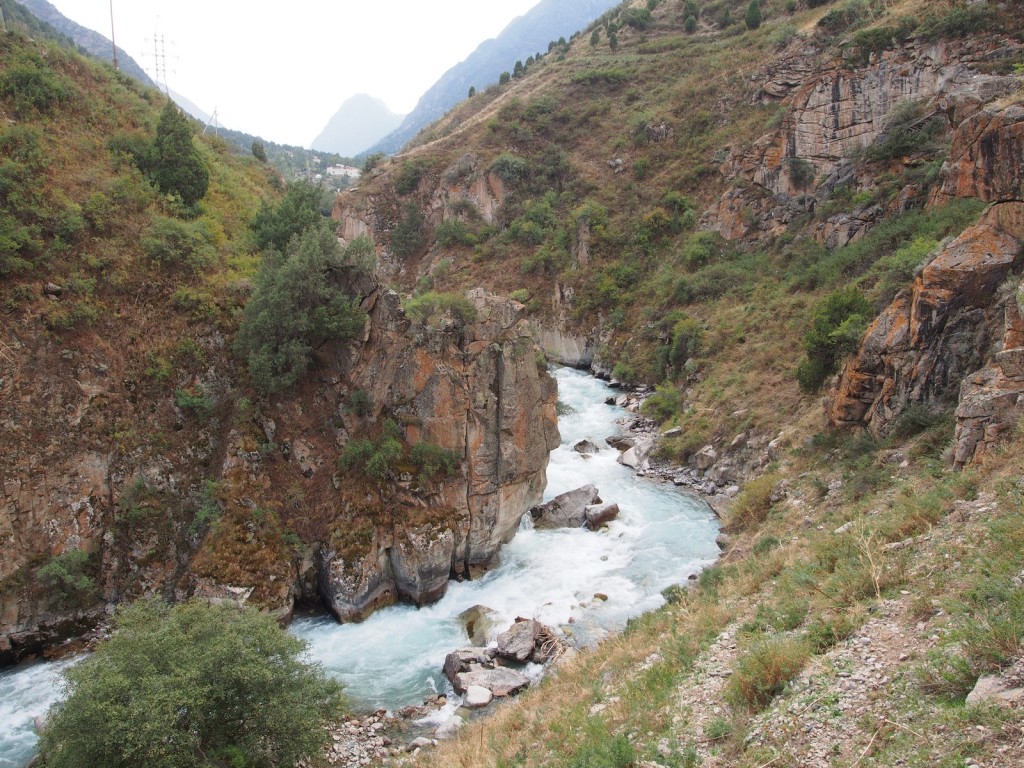We arrived in Bishkek on the eve of Independence Day, finding the hostel amazingly full, but managing to squeeze our tent into a corner of the back yard. Out and about the next day, we started with a run to the Osh Bazaar in the morning, to gather our strength by sampling the local food.
Our next destination was the Hippodrome, the seat of the national horse games. Inside, the atmosphere was jovial, but unfortunately we had arrived too late for the games themselves, and just saw the presentation of the prizes. We were lucky to have seen the games already in Song-Kul, or it would have been a great disappointment. Outside, some hunters in traditional garb were showing off their prize-winning hunting eagles.
We met back up with our friends in Ala-Too square, the heart of the city, where a large stage had been set up. A few people were starting to gather in anticipation of the night’s festivities, but it was mostly empty, so we took the opportunity to wander the streets a little more.
After a meal and a few beers to celebrate, we returned after nightfall to a packed square, filled with locals being entertained by the musical acts on stage. I would have said ‘revellers’, but the Kyrgyz way seems to be more standing in quiet appreciation, and not getting terribly excited or even applauding when the acts finish. Very different from home, with all the catcalls, whistling and cheering the almost overpowers the music sometimes.
We spent most of the next week chasing visas for the last stretch of countries before Europe – Tajikistan, Uzbekistan and Iran (Turkmenistan being the lone exception, which we’ll try for in Dushanbe). We spent our time on day trips in and around the city.
Bishkek is a surprisingly cosmopolitan city, that wouldn’t feel out of place in Western Europe. The city centre is pedestrian friendly, filled with parks and tree-lined boulevards along which couples stroll arm in arm.
One of the parks in the city centre is full of sculptures, mostly post-Soviet era.
We paid a visit to the state history museum, which was once dedicated to Lenin and the revolution. Inside, by far the most interesting feature is the bronze castings of revolutionary icons, and the intricate murals painted on the ceiling, all Soviet propaganda.
The city is also full of statues, from the legendary 15th century local hero Manas, to one of the largest remaining statues of Lenin in the ex-USSR.
We also day-tripped outside the city, to the nearby national park of Ala-Archa, where there are a number of hikes to do.
After more than a week of waiting we finally had all three visas in our passports, and were more than ready to leave – although we greatly enjoyed our time in Bishkek.


